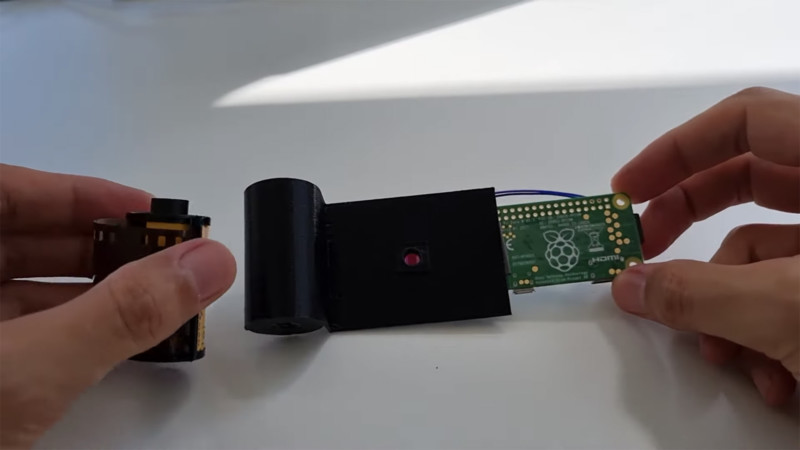DIY technology YouTuber befinitiv has used a low-cost 3D printer to turn a 50-year-old analog camera into a digital one.
By swapping out the film canister of a vintage Cosina Hi-Lite DLR with a Raspberry Pi and its 3D printed housing, the content creator was able to give his camera a modern-day spin. Putting his digital creation to the test, befinitiv found that he could capture full HD images and record videos, as well as live-stream his videos to his computer over Wi-Fi.
He said, “It can do everything that you expect from a digital camera nowadays. It can do video, it can stream video over Wi-Fi, and it can store things on an SD card.”

Analog vs. Digital
Before integrated electronics swept over the globe, we had analog cameras. These archaic devices worked by exposing photographic film to light, which would reproduce the image in front of the lens on the film material via a chemical reaction with silver halide. The film would typically then be developed in a darkroom and converted into a full-size print. As is the case with many obsolete technologies, analog cameras were clunky and cumbersome, and required photographers to carry film spools with them at all times.
Fast forward to the 90s: the consumer-grade digital camera revolutionizes the picture-taking game, making it easier than ever to immortalize family functions and drunk nights out. These days, analog cameras are largely considered antique pieces, found primarily in charity shops and the bedrooms of Fine Art students.

Digitizing a Cosina via 3D printing
To digitize his analog Cosina camera, befinitiv simply removed the cylindrical film canister and replaced it with a Raspberry Pi Zero. He 3D printed a housing cartridge for the Pi in the shape of the original film spool, meaning he could literally place the Pi camera in the location where the film would usually be exposed to light (right behind the camera’s shutter). The 3D printed casing also contained a local battery and a DC to DC converter to boost the voltage up to 5V.
To leverage the analog camera’s own optics, he removed the lens that came with the Pi camera, resulting in some very high-resolution imaging. As well as full HD pictures, befinitiv captured a video of the scenery outside his home and was even able to broadcast the stream live to his laptop, owing to the Pi’s Wi-Fi capabilities. Additionally, the Pi’s small sensor meant that the camera also featured a surprisingly “insane zoom”, essentially acting like a telephoto lens.
He concludes, “From the image quality standpoint, I’m really impressed. I couldn’t really tell from the video that this was shot on a 50 year old camera, it looks like a digital camera to me. Overall I’m really happy with how this turned out, it actually gives some interesting and nice looking images.”

3D printing content creators like befinitiv provide an accessible avenue for the general population to learn more about additive manufacturing and its benefits. Earlier this month, 3D printing YouTuber Teaching Tech designed and 3D printed his own open-source version of a rare antique fractal vise. Dubbed ‘the coolest tool you didn’t know you needed’, the 100-year-old fractal vise is near impossible to purchase these days, and is capable of morphing to grip virtually any object, regardless of the complexity of the geometry.
Elsewhere, student YouTuber Lucas VRTech has previously designed and 3D printed a pair of low-cost finger tracking gloves for use in virtual reality. Named LucidVR, the open-source gloves grant users the ability to precisely track their fingers without the use of dedicated VR controllers.
Nominations for the 2021 3D Printing Industry Awards are now open, have your say in who is leading the industry now.
Subscribe to the 3D Printing Industry newsletter for the latest news in additive manufacturing. You can also stay connected by following us on Twitter, liking us on Facebook, and tuning into the 3D Printing Industry YouTube Channel.
Looking for a career in additive manufacturing? Visit 3D Printing Jobs for a selection of roles in the industry.
Featured image shows the original Cosina Hi-Lite DLR with its film canister. Photo via befinitiv.


